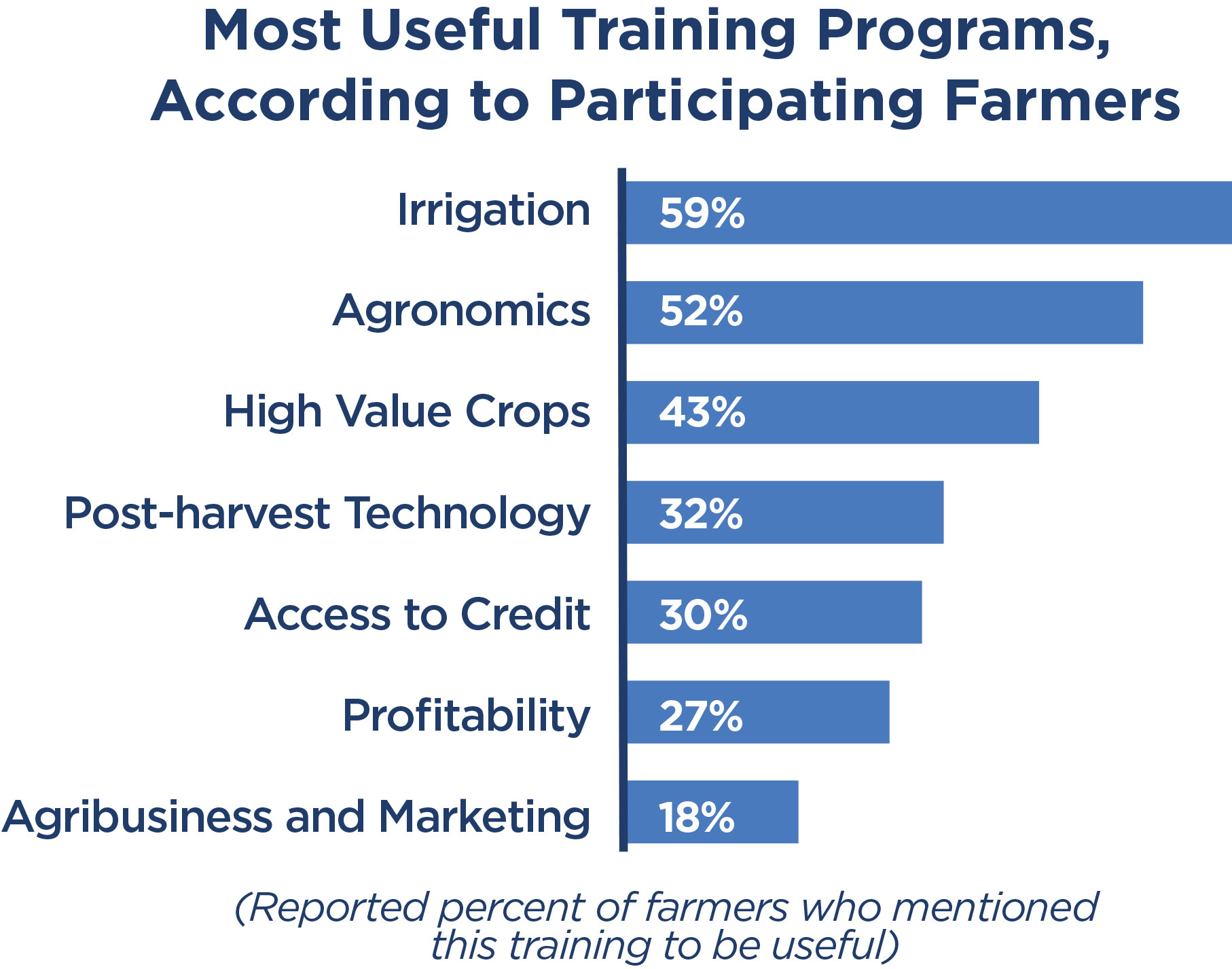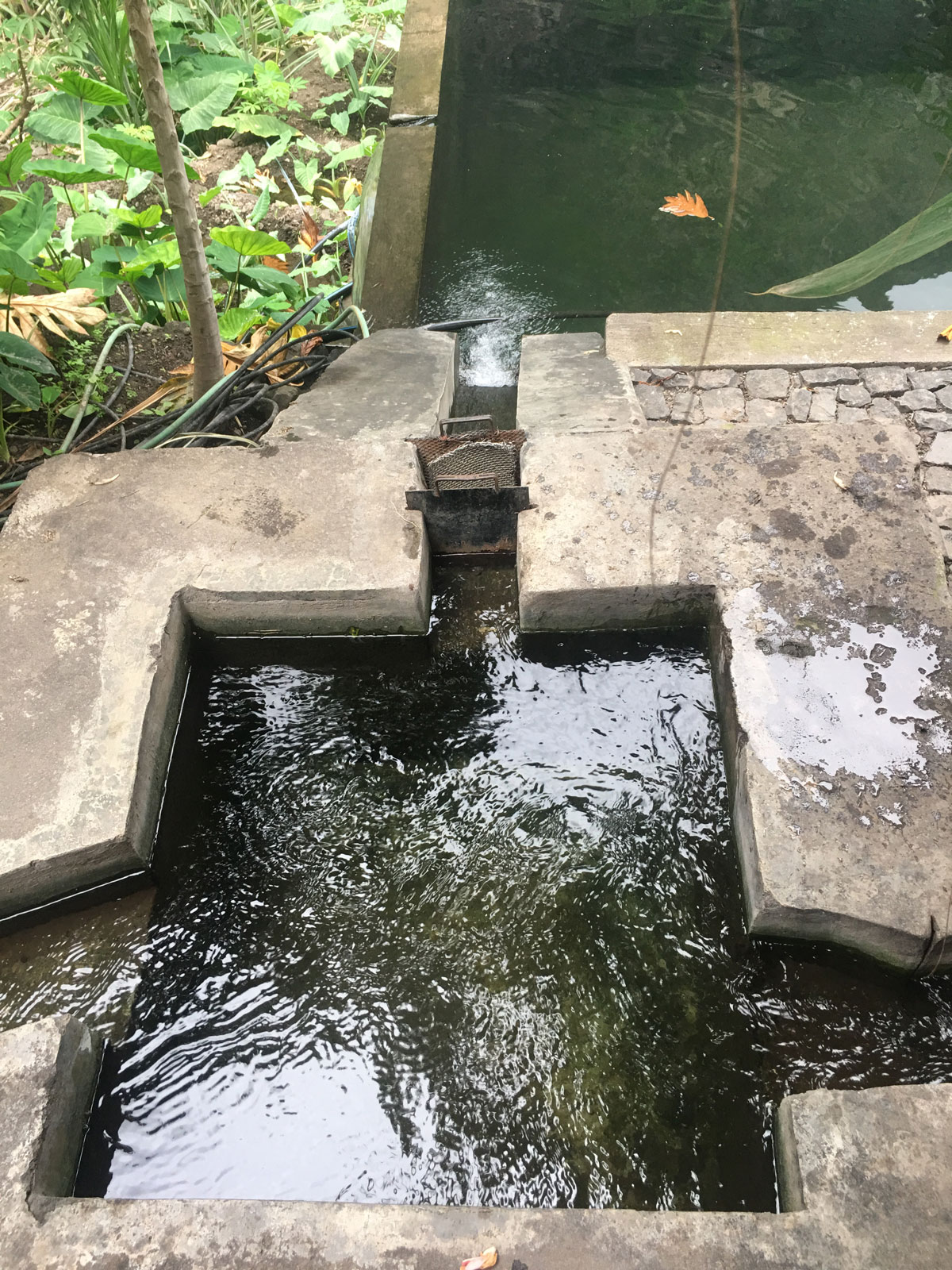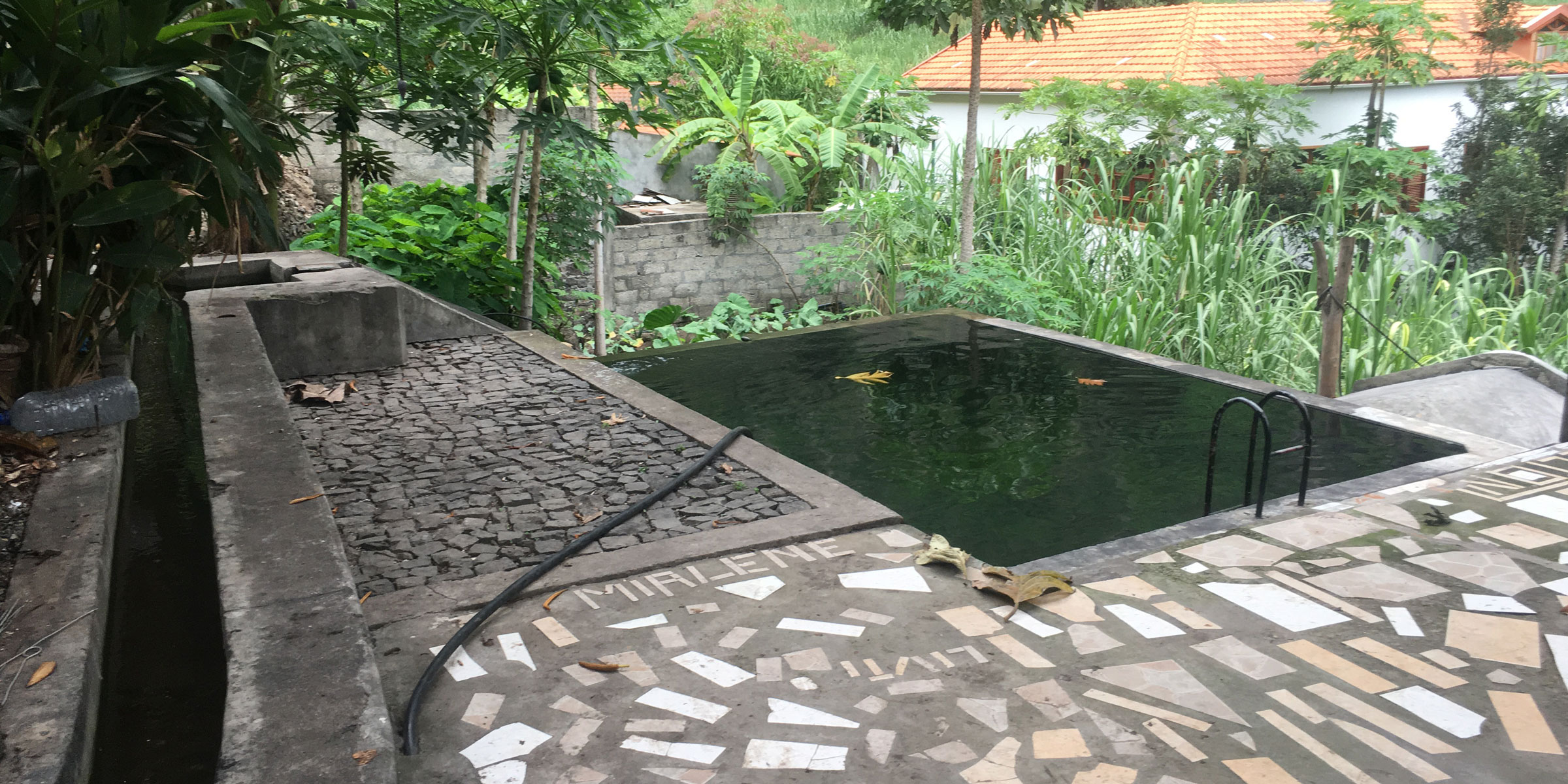Program Overview
MCC’s $108.5 million Cabo Verde Compact (2005-2010) aimed to enhance economic growth and poverty reduction through interventions in three key sectors of the economy, including investments in a Watershed Management and Agriculture Support (WMAS) Project. The $11.6 million WMAS Project aimed to increase agricultural productivity in three watershed areas: Santo Antão, Fogo, and Sao Nicolau through three key activities: Water Management and Soil Conservation, Agribusiness Development Services, and Access to Credit.Evaluator Description
MCC commissioned A2F Consulting to conduct an independent final performance evaluation of the WMAS Project. Full report results and learning: https://data.mcc.gov/evaluations/index.php/catalog/154.
Key Findings
Production Methods and Agricultural Productivity
- 2017 agricultural productivity declined to less than half its pre-Project levels, partly due to weather effects. Only 67% of the targeted improvements in production methods had been reached at the time of Compact closeout.
Economic Impacts
- 2017 agricultural sales increased by $2,303, and household incomes by $203 from the pre-Project levels. And these results—which cost $23,000 per farm in irrigation investments—were not sustained over the post-Project period.
Credit Services
- A total of 225 loans with an approximate value of $5,053 were made available to loan recipients.
- Lending has subsided in the post-Compact period, as repayment rates of farmer credits have been low.
Maintenance and Sustainability
- The prospects for sustainability of the WMAS Project outcomes are mixed. Farmer trainings have been sustained to date by the Ministry of Agriculture (MAA), but the majority of reservoirs in Santo Antão have now been diverted from their original purpose of drip irrigation.
- Nearly all Fogo reservoirs are currently non-operational due to factors such as destruction from the 2015 hurricane, weak technical and material capacity for the MAA to maintain infrastructure, and recurrent droughts.
Evaluation Questions
This final performance evaluation was designed to answer the following questions:- 1 To what extent has productivity of farmers and crop seasons increased in the treated areas?
- 2 Did the implemented training programs lead to widespread adoption of new irrigation practices and resort in new marketing strategies?
- 3 Are farmers in treated areas aware of post-harvest centers (“PHCs”) and rural extension centers (“RECs”)? Do they use them?
- 4 Is the amount of water sufficient for their needs? Do they export to other islands (Sal and Boa Vista)? If yes, how often, if not, why?
- 5 In the post-Compact period, are the financial institutions still lending money to farmers?
- 6 Did the farmers pay and are they still paying for the received water and services? Are the systems being repaired and maintained properly?
Detailed Findings
Production Methods and Agricultural Productivity
As a result of the WMAS Project, 28 reservoirs and 48 different types of dikes (torrential control, catchment, and small dikes) were constructed to capture and store water. One post-harvest center was built in Santo Antão, and three rural extension centers were rehabilitated. In addition, 51 extension workers and 549 farmers were provided training on a variety of topics related to agricultural production, agribusiness, marketing, and access to credit. The farmers ranked these training topics in the following order from most to least useful: irrigation, agronomics, high value crops, post-harvest technology, access to credit, profitability, and agribusiness and marketing. The MAA has continued providing training through the extension workers even after the Compact closed out.
Economic Impacts
Overall, crop sales and farmers’ household incomes improved, but these gains were concentrated among the more productive farmers. The average agricultural sales and median incomes in 2017 ($4,026.5 and $1,014) were greater than those in the pre-Project period ($1,723 and $811) — reflecting a $2,303 and $203 increase in sales and income, respectively. But only 39% of the farmers reported increases; another 55% of them reported declines. Similarly, only 14% of the farmers reported increased exports, while 29% reported a decrease.Credit Services

Maintenance and Sustainability
The majority of the reservoirs in Santo Antão now mainly cater to traditional rather than drip irrigation, while the borehole built in Santo Antão has remained non-operational due to farmers’ unwillingness to pay for the electricity. None of the reservoirs in Fogo are currently in operation, mostly because of destructions caused by the 2015 hurricane, and the MAA has shown weak technical and material capacity to maintain the infrastructure. Also, recurrent droughts affect the water availability of spring-fed reservoirs.In both islands, lack of willingness to pay for water was one of the major reasons affecting the sustainability of the MCC-built infrastructure. According to the survey, 92% of farmers did not pay for the irrigation water they used, and the percentage of farmers paying for irrigation water was slightly higher in Fogo (13%) than in Santo Antão (7%). Since maintenance relies on funds collected from the water payment, infrastructure was not being regularly maintained.
MCC Learning
- Designing and implementing the WMAS Project according to existing academic literature is critical; but also critical are the sequencing and the quality of the construction activities. MCC now ensures that due diligence and feasibility studies are conducted prior to full design and implementation.
- Low non-payment risks could be mitigated through an introduction of consequential risk-sharing mechanisms that would affect the MFIs’ portfolio.
- Good quality control protocols are needed to ensure that site selection and construction of reservoirs, PHCs and RECs follow industry best-practices. MCC now requires that contractors follow these protocols during feasibility and design studies, and construction.
- More sustained technical expertise strengthening on the supply side of the farming loans (i.e. MFIs) is as important as training and support on the demand side (i.e. farmers).
Evaluation Methods
This was an ex-post evaluation design. Using a theory-based approach, the evaluator examined the Project’s logical framework, from inputs to outputs to impacts, in order to explore how and whether inputs were correctly designed in a way that would lead to the expected goals. The exposure period was 7.5 years for the Infrastructure Activity and 8 years for the Agribusiness and Credit Activities. Sampling included 100 respondents out of 249 potential beneficiaries in Santo Antão and 25 respondents out of 49 potential beneficiaries in Fogo.
The evaluation aimed to assess Project design, implementation, and outcomes.
- With respect to Project design, the evaluator team assessed whether the Project was adequately designed to achieve the expected outcomes. To this end, the team took a holistic approach with a focus on relevancy and the need/demand for the Project activities.
- With respect to Project implementation, the team evaluated the overall adherence to the design. It assessed whether the intervention was carried out as planned, and in the same way everywhere within one island and across islands.
- With respect to Project outcomes, the team evaluated whether the expected results were achieved (i.e. effectiveness), and whether these results have been sustained during the post-Compact period (i.e. sustainability).
2019-002-2248


